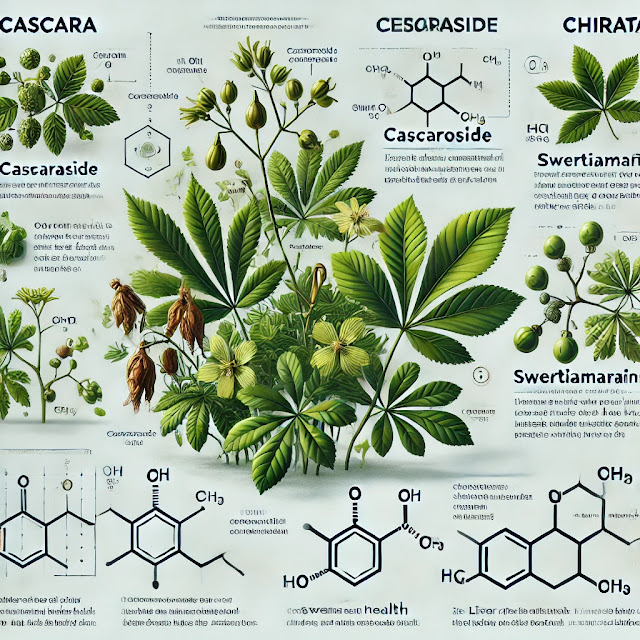Cascara (Cascara sagrada, Rhamnus purshiana)
Biological Source: Cascara sagrada comes from the dried bark of the tree Rhamnus purshiana, belonging to the family Rhamnaceae. The bark is typically collected from wild or cultivated trees in North America, specifically in the Pacific Northwest.
Chemical Constituents:
- Anthraquinone glycosides (main active component), including cascarosides A, B, C, D.
- Aloin: A bitter compound with laxative effects.
- Emodin and Chrysophanol: Anthraquinone derivatives.
- Tannins: Known for their astringent properties.
- Resins: Contribute to the bitter taste.
Uses:
- Primarily used as a laxative to treat constipation. The anthraquinones stimulate peristalsis (muscle contractions in the intestines).
- In traditional medicine, it has been used for liver and gallbladder issues.
- Acts as a bitter tonic, promoting digestion.
Chirata (Swertia chirata)
Biological Source: Chirata is derived from the entire plant Swertia chirata, belonging to the family Gentianaceae. It is a herb found in the temperate Himalayas, extending from Kashmir to Bhutan.
Chemical Constituents:
- Bitter glycosides such as swertiamarin, and amarogentin (considered one of the most bitter substances).
- Xanthones: Compounds like mangiferin have antioxidant properties.
- Flavonoids: Including luteolin and quercetin.
- Triterpenoids: Contribute to the plant's anti-inflammatory and hepatoprotective effects.
Uses:
- Primarily used as a bitter tonic for promoting digestion and stimulating appetite.
- Employed in treating fevers, especially in traditional Ayurvedic medicine for malaria and intermittent fevers.
- Acts as a liver tonic and is used in treating liver disorders like jaundice.
- Known for its anti-inflammatory, antibacterial, antidiabetic, and antipyretic properties.








0 Comments
Thanks for your feedback, i'll get back to you soon.